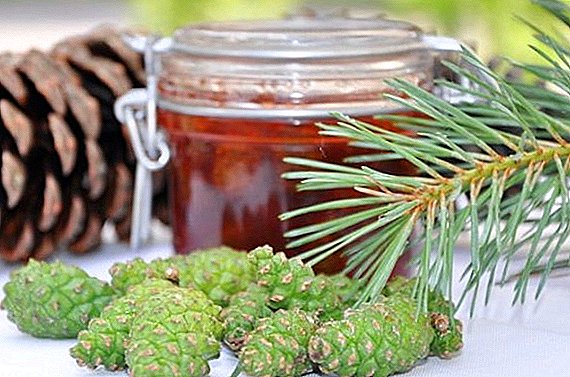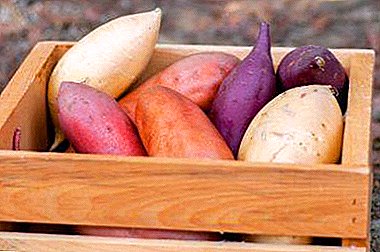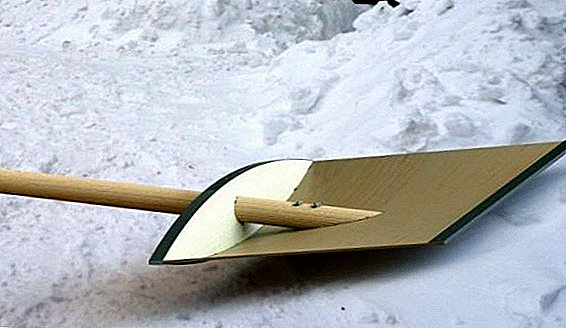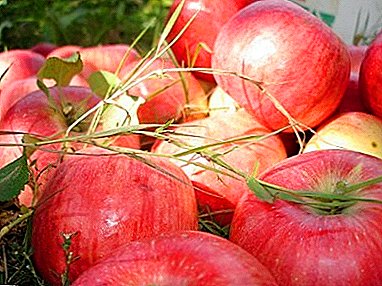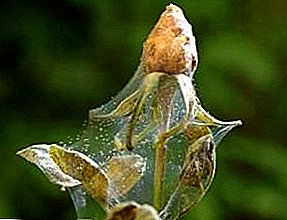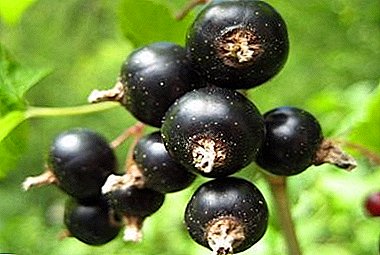
Black currant - the berry is known to all, and attention to this amazing plant is easy to explain with a wide range of its use.
This is a real treasure for phytotherapists, useful substances contain both leaves, and twigs, and berries, roots just let down, they have not yet found a worthy use.
The center of attention is undoubtedly the berry with its incomparable taste and aroma.
The article discusses in detail the variety of currants Bagheera, as well as the external description of the plant and the photo.
For more than two hundred varieties with a variety of features settled in the gardens, currant will be found for every taste, and rarely in what gardener does a plant of one variety. Usually it is currant from early to late ripening.
Description of Bagheera
Bagheera - grade of black currant of average term of maturing. It has a sprawling bush of medium degree of growth, from one and a half to two meters, leaves of medium intensity of staining, dull, have five blades, slow downability is noticed - the bush leaves in winter with foliage.
The variety is self-fertile, good because the berry is large, up to three grams, is about the same size, its color is not just black, but glossy black, which makes the berry even more attractive. Berry is collected in brushes from three to seven centimeters from four to seven pieces in a knot, and brushes in knots are usually two or three.
Yield the Bagheera variety is good, up to five kilograms from a bush, early, in the second or third year after planting, enter the fruiting stage. The peel has an average density and dry separation, which makes it possible not only to store the berry, but also to transport it without loss. Sweet taste and the berry flavor preserves for a long time, matures amicably.
The excellent taste of the berry is designed to make jam from it. Especially in conjunction with summer varieties of apples: Augustus, Hornist, Papirovka, Robin, Bely Pour.
A very important positive quality of the variety is its resistance to low temperatures in winter and high in summer. Anthracosis and powdery mildew of a plant of the variety Bagheera are rarely affected, more often suffer from rust and kidney mite.
A photo






Breeding history
A remarkable variety of black currants Bagir obtained by the method of hybridization from varieties Minay Shnyrev and Bredtorp breeders All-Russian Research Institute them. I.V. Michurin.
Cultivation and care
 Rarely does a plant prefer light shading, give as much sun as possible to all, and currant only benefits from a small shade, sunburn does not occur, and this quality does not depend on the variety.
Rarely does a plant prefer light shading, give as much sun as possible to all, and currant only benefits from a small shade, sunburn does not occur, and this quality does not depend on the variety.
Soils almost all plants love fertile, neutral, and currants are no exception in this regard, but if the soil in your area is, let's say, not very good, it is in your power to ennoble it.
To do this, we fill a large bucket of humus, three hundred grams of superphosphate, three hundred grams of potassium sulfate, fifty grams of potassium sulfate, and a shovel of wood ash; , mulch the soil around a small bush, prune a sapling into two or three buds.
The deed is done, we take care and get the long-awaited result, but this is if you didn’t save on the planting material and did not buy it from a random seller, and if this happened, wait for surprises.
These are very simple agrotechnical methods, without which, however, it is impossible to do.
Bush varieties Bagheera it has an average dew force, sprawling, and by the fifth year after landing it should have three or four shoots each year of growth. The bush can grow in one place for up to fifteen years, and as it ages, old shoots are cut out with the formation of young ones going for replacement.
A bushy plant with good rooting of shoots, to which our variety belongs, grows very quickly, as the shoots take root in places of contact with the soil. To avoid uncontrolled growth, shoots should be raised above the ground.
 Currant propagates by layering and shoots, and rooting them is very easy.
Currant propagates by layering and shoots, and rooting them is very easy.
Well-ripened shoots are necessarily cut into a slanting cut of fifteen centimeters and planted into the prepared soil for planting at an angle of forty-five degrees with two or three buds above the soil surface. Care for cuttings classic.
Diseases and pests
Variety Bagheera resistant to anthracnose and powdery mildew, but may be affected by rust and mites. Ticks openly move around the plant from the opening of the buds to the end of flowering, and at this time the most vulnerable to the effects of pesticides.
For processing use drugs Neoron, Actellic, Acarin.
On our site you can get acquainted in detail with the main signs of common garden diseases. Read all about anthracnose, bacteriosis, chlorosis, rubella, oidium and mildew, //selo.guru/ptitsa/bolezni-p/gribkovye/parsha.html and rust, bacterial cancer and bacterial burn.
From the moth before flowering the plant is sprayed with a shag infusion. If you notice weakened shoots with small leaves, remove and burn them necessarily, and sprinkle the bush with Karbofos after flowering, so you will destroy the currant glass bowl. Aphids can be defeated only by destroying the ants, boiling water is suitable for their extermination - it is harmless and effective.
Currants varieties Bagheera bred in the late seventies of the last century and successfully passed the test of time, while remaining a favorite of gardeners despite the fact that the number of new varieties is constantly growing.
However, one should not avoid such varieties of black currant: Belarusian Sweet, Gross, Summer House, Dobrynya, Venus.


